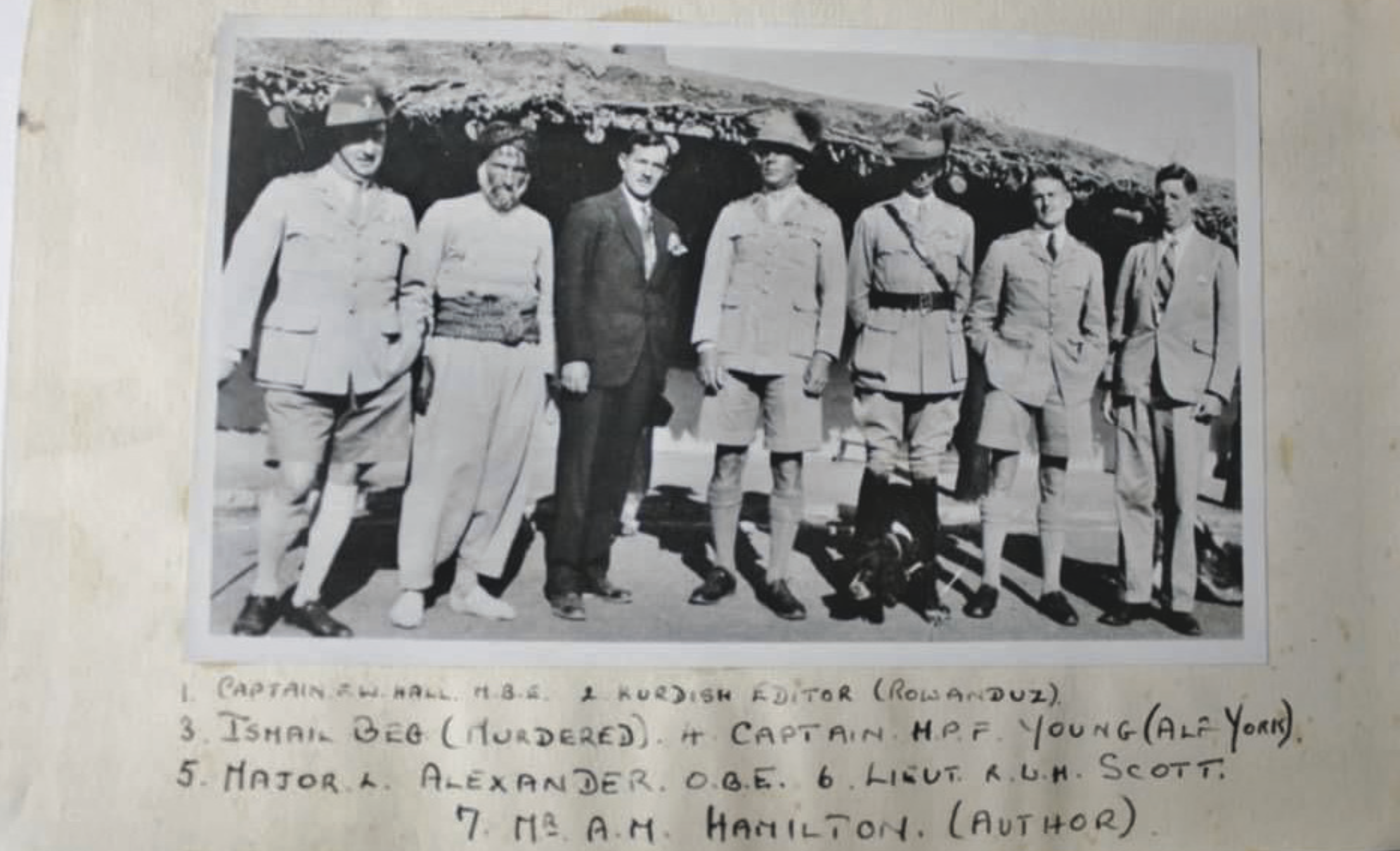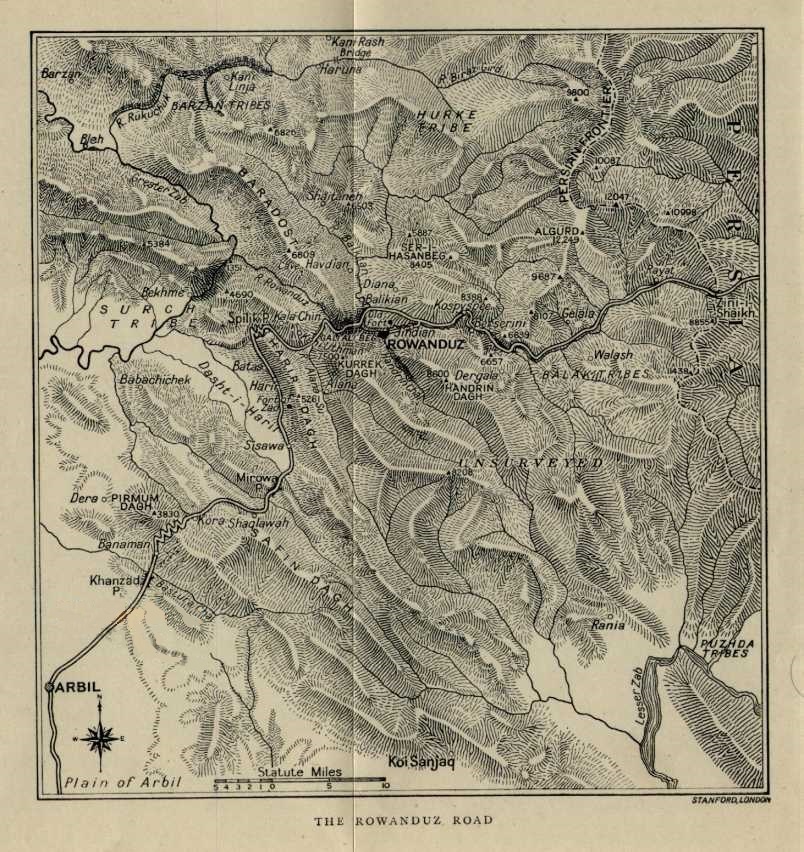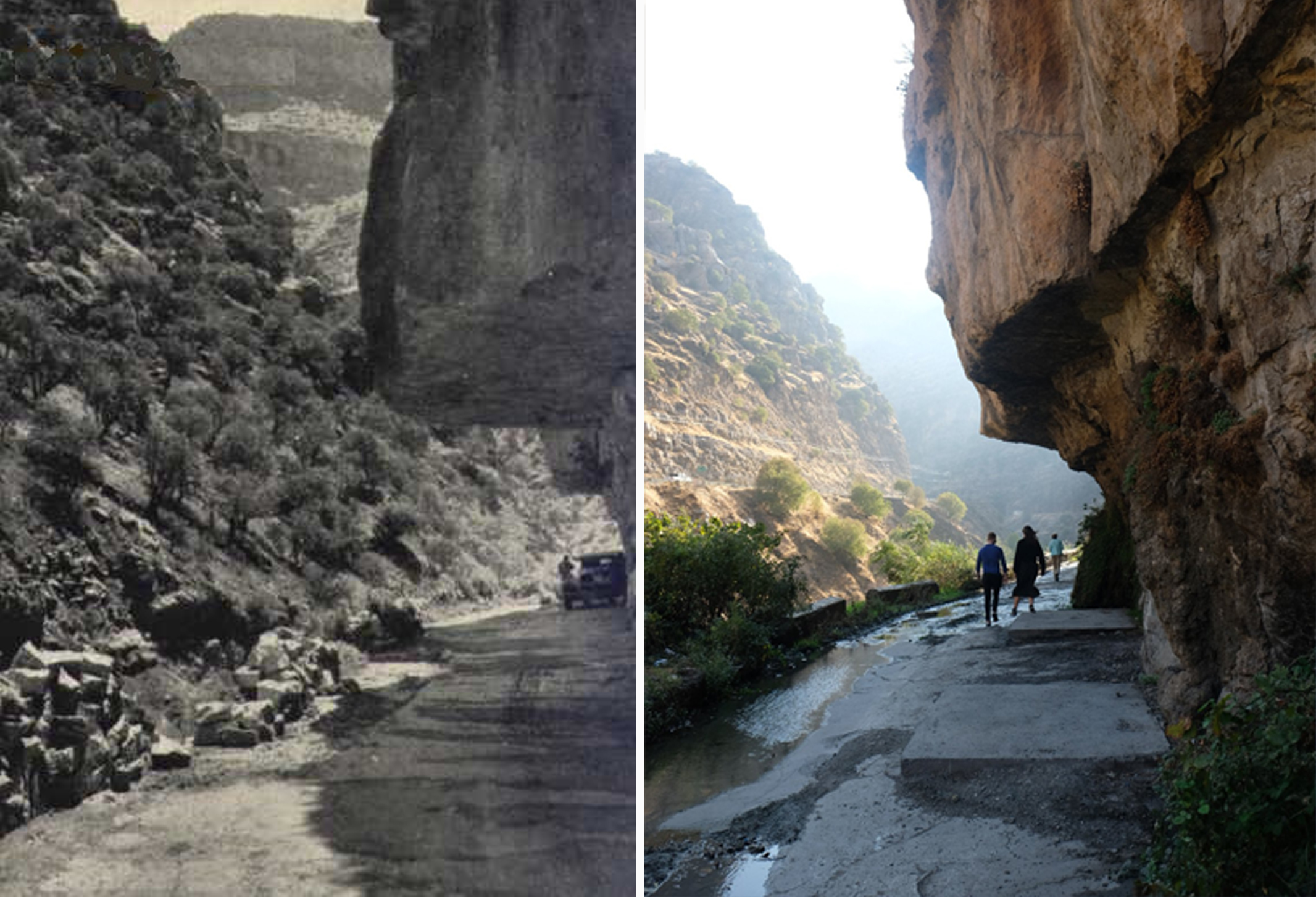In the rugged terrain of Kurdistan, where mountains and valleys often separate villages and towns, transportation has always been a challenge. New Zealand's civil engineer Archibald Hamilton was tasked in 1928 by the British, who controlled and created Iraq after the fall of the Ottoman empire, with changing that by building a road from Erbil through the mountains and valleys of Kurdistan to the Iranian border in Haji Omeran.
In the book, Road Through Kurdistan, Hamilton describes how he was transferred to Kurdistan to build the 185-km road in four years, which had the aim of the “pacification of the Kurdish tribes-people and for the introduction of (Iraqi) Government influence urgently demanded roadbuilding.”
“It was a thrilling prospect from every point of view,” he wrote. “The road would be a romantic one, for it would pass through mountains where roadbuilding has never been attempted by any past civilizations, owing partly due to technical difficulties, but mainly due to the intractable character of the inhabitants.”
Nevertheless, Hamilton felt sympathy for the Kurds since his own ancestors in Scotland “were little different in their customs and rules…We had built a road which, it was hoped, would not only assist in trade between Persia and Iraq, but would also carry peaceful administration into this most remote corner of the kingdom,” he wrote in his memoir.
The road was supposed to be known as the Rawanduz road, but was later named after Hamilton. Initially, when Hamilton arrived in Rawanduz, he wrote that he knew “little about the country or the people, and I could speak no Kurdish at all.” However, he “reveled in the mountain scenery and the invigorating air.”

In Rawanduz today, close to one of the stunning valleys where Hamilton once worked, stands a newly refurbished statue that commemorates his achievements.
The statue includes a quote from Hamilton, who acknowledged the Kurdish people's warmth and hospitality, stating that "you will not find people who love flowers and spring more than the Kurdish people."
During his four-year expedition, Hamilton triumphed over illness, local conflicts, and bureaucratic hurdles to construct one of the most vital roads in the region. With the aid of 1,000 laborers, hailing from diverse ethnic backgrounds and fluent in multiple languages, he accomplished this impressive feat.
Over time, the Hamilton Road took shape, snaking its way through the mountains and valleys of Kurdistan until the Iranian border. This was also done with the help of local Kurdish tribesmen and elites, including the Kurdish Chieftain Ismail Beg from Rawanduz, who helped him because he thought that Kurdistan would never prosper without roads.
Nonetheless, they held diverging opinions on the direction Iraq should take. Hamilton believed that the Kurds should be integrated into a democratic Iraq, whereas the Kurdish chieftain mistrusted Baghdad and advocated for Kurdistan to serve as a neutral, inviolable (and independent) state, akin to Switzerland's position in Europe.
On the contrary, Ismail Beg complained that the Kurds were split among three countries - Arabs, Persians, and Turks - who had little concern for the Kurdish people's well-being. He cited instances of mistreatment of Kurds by Arabs, Persians, and Turks to support his claim. The distrust between Arabs and Kurds that existed during Hamilton's era persists to this day.

Despite their disagreements, the Kurdish chieftain Ismail Beg shared his vision with Hamilton for Kurdistan to become one of Asia's most appealing tourist destinations. “They'd come afar for the scenery and the hunting and mountain-climbing and winter sports and they would love our spring flowers,” he told Hamilton.
Today, this vision has become a reality in part. The stunning mountainous landscape of Kurdistan draws domestic tourists who traverse the Hamilton Road from Erbil and stay in nearby hotels.
“Despite the limited tools available at that time, the road played a crucial role in trade between Iraq and Iran, as well as attracting tourists from all over the world today,” said Rekan Rasoul, the founder of the hiking group Rock ur Bones, who frequently uses the Hamilton Road to bring hikers to the area.
“The waterfalls and hiking trails along the road make it easier to access the base or starting point. Moreover, the road provides access to archaeological and undiscovered sites on both sides, and its construction made it easier for geologists to study the area,” he told the Kurdistan Chronicle.
“Besides the scenic views and waterfalls, the section between Khalifan and Rawanduz has several caves that can serve as natural shelters for overnight camping for both tourists and locals, with easy access from all sides and safety. From the beginning of the road all the way to the Iranian border, there are numerous cabins, hotels, motels, and villas for rent, generating significant income for locals.”

Ali Beg waterfall, where Hamilton established a camp and resided for two years, now captivates thousands of visitors from across Iraq, particularly during the scorching summer season and religious festival of Eid al-Fitr, which marks the end of Ramadan.
Moreover, tour guides often organize trips for foreign travelers along the Hamilton Road to Rawanduz, which has become a popular attraction.
During the spring of 2012, Aaron, a globetrotter, embarked on a journey along the Hamilton Road to appreciate the captivating valleys. In his travel blog, he expresses wonder at the road's impressive engineering and highlights that it not only serves a strategic purpose but also boasts a magnificent display of nature's beauty.
“Not only was it a strategic route but the mere fact that this road exists through such dramatic scenery is really an engineering marvel!” he wrote on his travel blog.
In addition, the Hamilton Road now facilitates the travel of sizable groups of local mountain hikers to nearby peaks such as the Halgurd Mountains, which are among the tallest in Kurdistan.

To sum up, the Hamilton Road in Kurdistan serves as a testament to Mr. Hamilton's commitment to uniting the region and improving the lives of its residents. Despite the road's initial construction by the British to control Kurdish tribes, it has now become essential in facilitating transportation, commerce, and promoting local tourism, aligning with the vision of Hamilton's dear friend, Ismail Beg.
Sadik Dealzi, a resident of Choman, a town located near the Hamilton Road and the Iranian border, who lived abroad and is knowledgeable about the area, also recalled how Hamilton's grandson and daughter visited the Kurdistan Region in 2009 or 2010.
According to Dealzi, while it is true that Hamilton's construction of the road was intended to subdue the Kurdish people on behalf of the British Empire, it has also had positive effects.
“We (local people) have greatly benefited from this road as it has brought about positive changes. People situated on the road are now more educated and are able to strengthen their economy.”
“The road is important; we will never forget what Hamilton did 100 years ago.”
Wladimir van Wilgenburg is a seasoned reporter and analyst who specializes in Kurdish affairs, and holds a Master’s degree in Kurdish studies from Exeter University.

